Linking data: Kohesio platform
Explore the database of projects funded by the EU cohesion policy
In our ‘Linking data’ series, we are presenting EU projects that use linked open data (LOD). What data is linked in their projects? Why did they decide to use LOD? What benefits does it bring? Follow the series to find out.
In this episode, we are presenting the Kohesio platform. Read on to find out what it is, and how and why it uses LOD.
EU cohesion policy
The EU’s cohesion policy contributes to strengthening economic, social and territorial cohesion in the European Union. It aims to correct imbalances between EU Member States and between regions. It delivers on the European Union’s political priorities, especially the green and digital transitions.
Several policy funds have been set up: the European Regional Development Fund (ERDF), the European Social Fund (ESF), the Cohesion Fund (CF) and the Just Transition Fund (JTF). Every year, these funds support dozens of thousands of projects selected by the funding programme authorities across all Member States and regions, giving priority to those territories whose development is lagging behind.
Discover EU projects in your region
To improve transparency and increase awareness of the investments carried out through cohesion funds, the EU set up Kohesio: a platform offering easy and transparent access to up-to-date information on projects co-funded by the EU cohesion policy and on their beneficiaries.
Currently, Kohesio contains data on more than 1.7 million projects and approximately 500 000 beneficiaries financed throughout the funding period 2014–2020. You can find projects and beneficiaries through an interactive map embedded in the homepage or through dedicated search pages. Smart search functionalities, powered by artificial intelligence, allow you to search for specific terms and related concepts. The results can be refined using standard and advanced filters. For instance, you can focus on one Member State, region or theme, or zoom in on a specific funding programme or investment category.
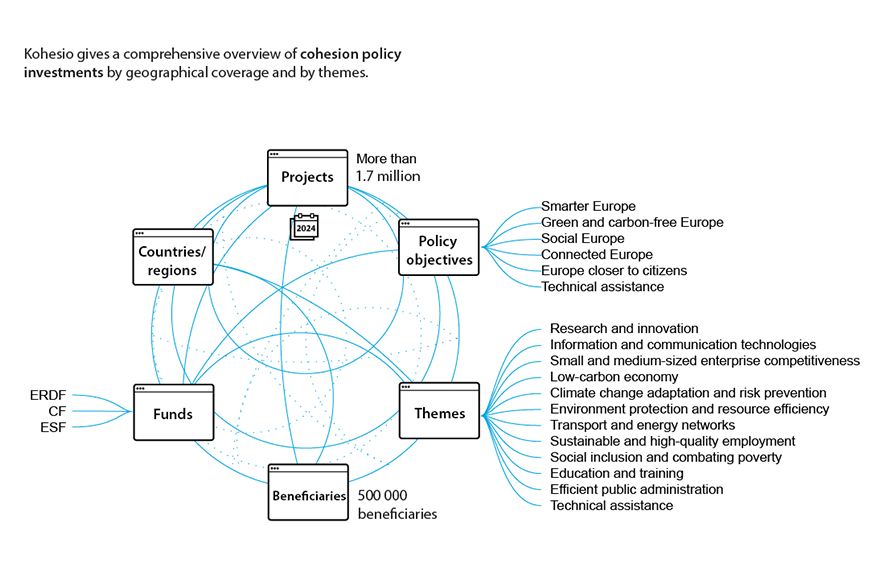
Kohesio will be progressively supplemented with data on new projects and beneficiaries for the 2021–2027 funding period, in close cooperation with Member States and programme authorities.
Kohesio.eu – how does it work?
Kohesio is built using open-source tools provided by Wikimedia Deutschland and it relies on World Wide Web Consortium’s open standards related to the semantic web. The semantic web provides a common framework that allows data to be shared and reused across applications, enterprises and community boundaries.
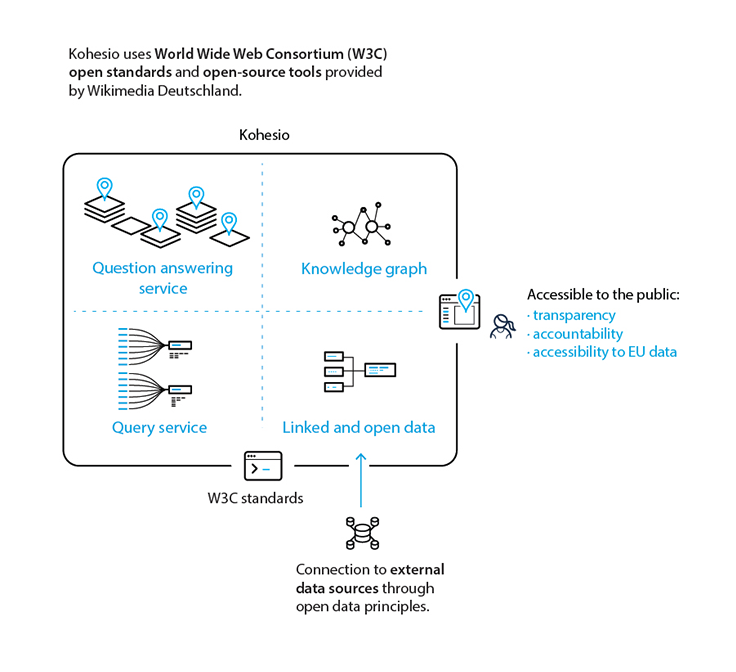
The main source of data for Kohesio are the detailed lists with information on the financed projects. These lists are regularly published by the Member States and the Cohesion Funds’ managing authorities. The challenge is that they are published on various national websites and data is not formally standardised.
To overcome this issue, Kohesio’s project team developed algorithms to streamline and centralise data collection for Kohesio across national websites. When a new list of operations is published by the managing authorities, it is acquired by the project team and processed according to a predefined set of rules. This allows the information about projects co-financed by the EU to be stored and standardised. Project titles and descriptions are then machine-translated into all EU languages and location information is used to determine the latitude and longitude of the projects. Finally, data are included in the EU Knowledge Graph and made available in Kohesio.
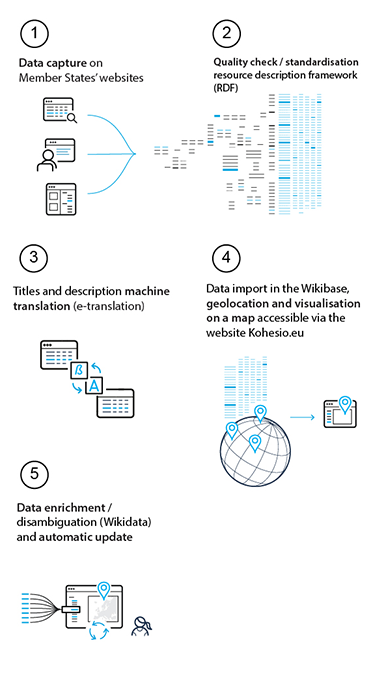
All the datasets used on the platform are available for download and free reuse both in CSV/XLSX and in RDF format. Question-answering services are currently under development. They will allow you to get insights into the financed projects without having to analyse the data yourself.
Why linked open data?
Using LOD for building the Kohesio platform is a flexible and expandable technical solution. It also allows data to be supplemented with external resources (e.g. from Wikidata) and allows reuse of information already publicly available on the web.
Finally, linked and open data is the right technology for collaborative environments, such as Kohesio, allowing everyone to contribute to creating and sharing knowledge about EU investments.
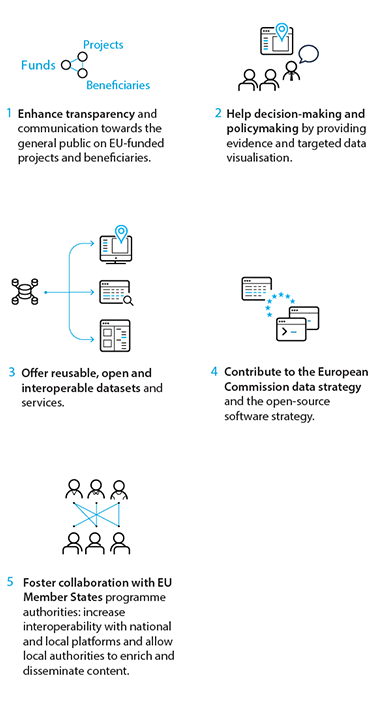
How can you benefit from Kohesio?
Kohesio is the place to go if you are curious about what the EU does and funds in your own Member State or region. Thanks to the platform’s intuitive and user-friendly structure, it is easy to use for everyone. The platform can also be useful for researchers and policymakers to build evidence-based analysis and for data journalists to analyse and report on EU investments.
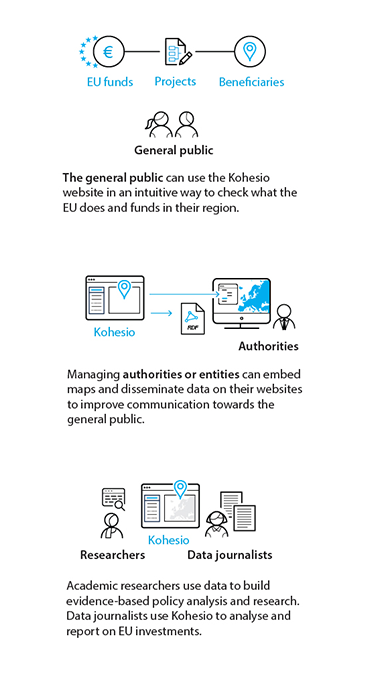
The development team is working on a number of functionalities that will help you make the most out of Kohesio. This includes a fully multilingual version of the platform – covering all 24 EU official languages – and the possibility of embedding a Kohesio map in other websites.
Useful links
Download data from the Kohesio platform
Graphics used in this article (available for reuse under CC-BY-4.0)
